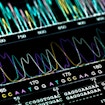
The UBE3A gene, encoding the ubiquitin ligase UBE3A/E6AP, is a high-confidence risk gene for autism spectrum disorder (ASD) but the downstream targets of UBE3A-mediated ubiquitination are poorly defined. In the current project, Hiroaki Kiyokawa plans to apply a novel proteomic technique called ‘orthogonal ubiquitin transfer’ to identify neuronal-specific substrates of UBE3A. Successful completion of this project is expected to provide a novel high-resolution perspective about neuronal-specific pathways downstream of UBE3A and identify potential therapeutic targets for ASD.

